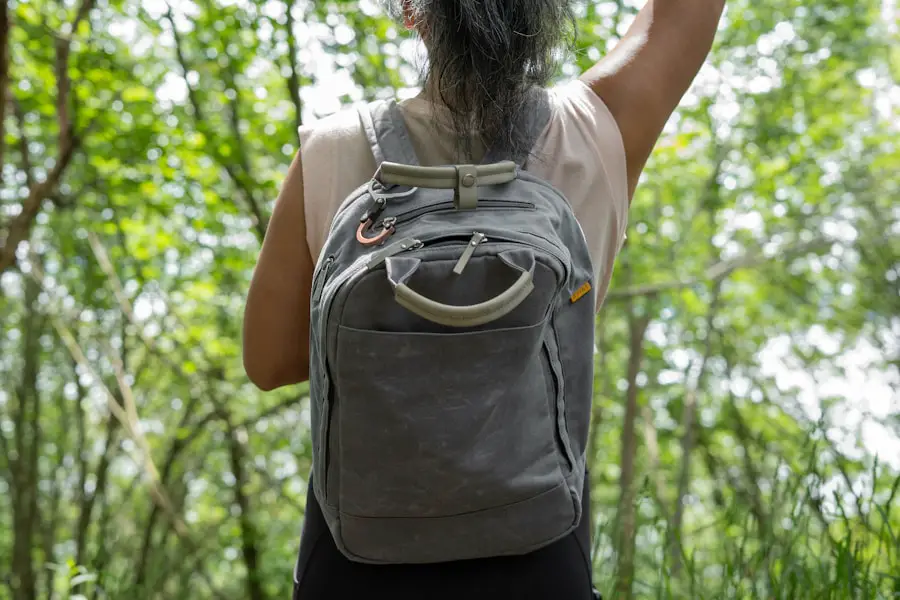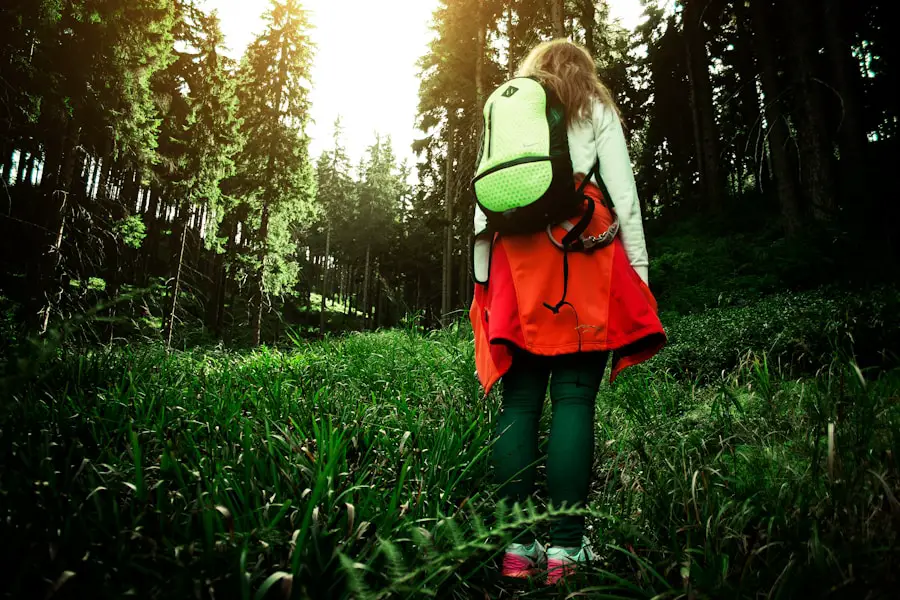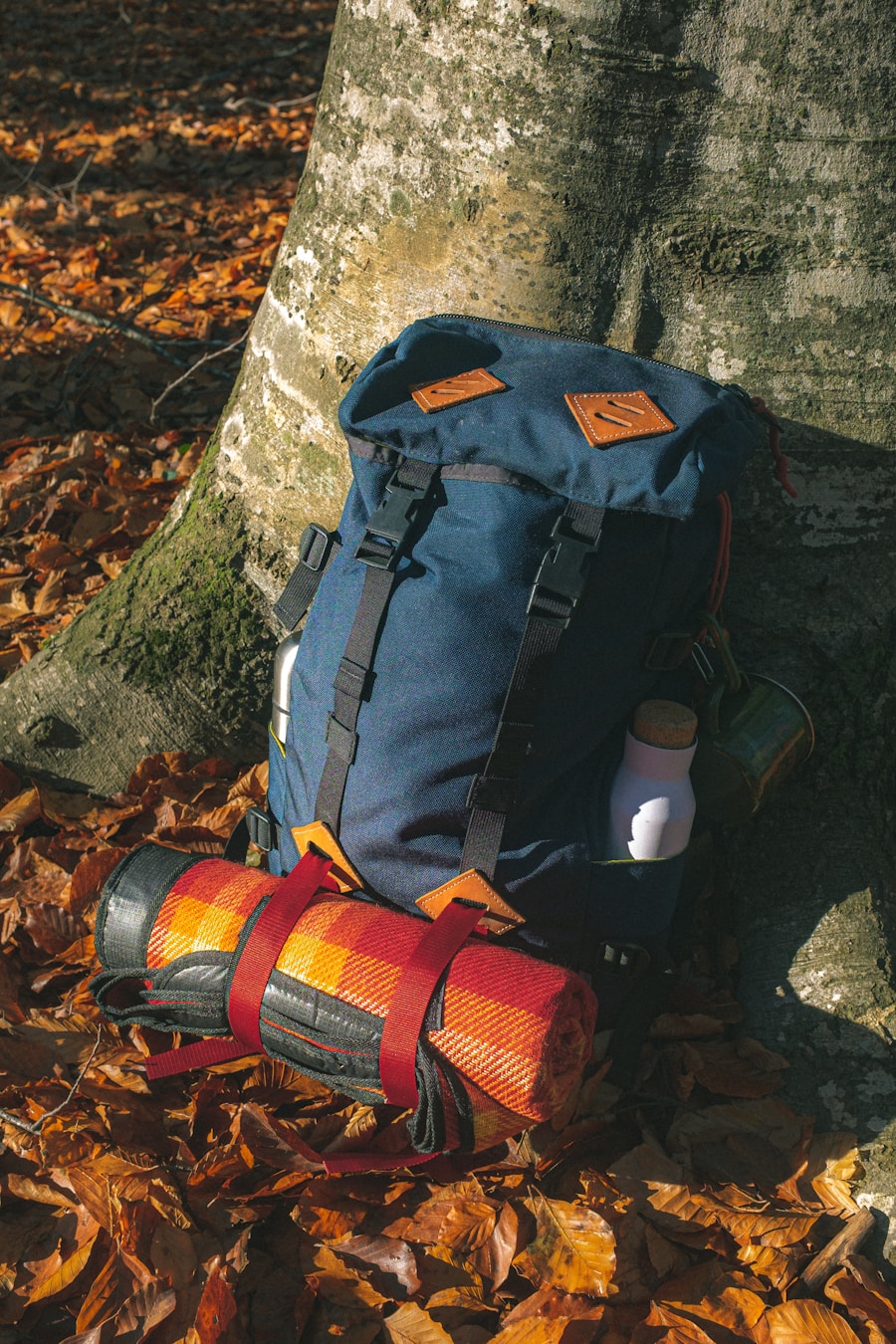As the world becomes increasingly aware of environmental issues, outdoor enthusiasts are seeking ways to minimize their impact on nature while enjoying the great outdoors. Eco-friendly hiking gear has emerged as a vital component of this movement, allowing hikers to explore trails and mountains without leaving a significant footprint. This gear is designed not only to enhance the hiking experience but also to promote sustainability and conservation.
By choosing eco-friendly options, hikers can contribute to the preservation of natural landscapes, protect wildlife habitats, and support ethical manufacturing practices. The rise of eco-friendly hiking gear reflects a broader trend towards sustainability in various industries. As consumers become more conscious of their purchasing decisions, brands are responding by developing products that prioritize environmental responsibility.
This shift is evident in the materials used, the production processes employed, and the overall lifecycle of the products. From biodegradable tents to recycled water bottles, eco-friendly hiking gear encompasses a wide range of items that cater to the needs of modern adventurers while respecting the planet.
Key Takeaways
- Eco-friendly hiking gear is designed to minimize environmental impact and promote sustainability in outdoor activities.
- Choosing sustainable materials such as recycled polyester, organic cotton, and hemp can reduce the environmental footprint of hiking gear.
- When selecting eco-friendly hiking apparel, look for items made from sustainable materials, with minimal chemical treatments and a focus on durability.
- Sustainable footwear for hiking includes options made from recycled materials, natural rubber, and ethically sourced leather.
- Eco-friendly hiking accessories like reusable water bottles, solar-powered chargers, and biodegradable hygiene products can enhance sustainability on the trail.
- Eco-friendly camping gear includes items made from sustainable materials, such as bamboo or stainless steel, and designed for minimal environmental impact.
- Tips for maintaining and repairing eco-friendly hiking gear include proper cleaning, storage, and using eco-friendly repair kits when needed.
- Embracing a sustainable hiking lifestyle involves making conscious choices about gear, reducing waste, and respecting the natural environment.
Choosing Sustainable Materials for Hiking Gear
When selecting eco-friendly hiking gear, one of the most critical factors to consider is the materials used in its construction. Sustainable materials are those that have a minimal environmental impact throughout their lifecycle, from extraction and production to disposal. For instance, organic cotton is a popular choice for hiking apparel because it is grown without harmful pesticides and fertilizers, reducing soil and water pollution.
Additionally, organic cotton is often produced using less water than conventional cotton, making it a more sustainable option. Recycled materials are another excellent choice for eco-conscious hikers. Many brands now offer products made from recycled plastics, such as polyester derived from discarded bottles.
This not only helps reduce waste in landfills but also decreases the demand for virgin materials, which often require significant energy and resources to produce. Furthermore, some companies are innovating with materials like Tencel, which is made from sustainably sourced wood pulp and produced in a closed-loop process that minimizes water usage and chemical waste. By opting for gear made from these sustainable materials, hikers can significantly reduce their environmental footprint.
Eco-Friendly Hiking Apparel: What to Look For

When it comes to eco-friendly hiking apparel, there are several key features to consider that can enhance both comfort and sustainability. First and foremost, look for clothing that is designed for durability. High-quality garments made from sustainable materials will not only last longer but also reduce the need for frequent replacements, which can contribute to waste.
National Park Service Brands that prioritize craftsmanship often produce items that withstand the rigors of outdoor activities while minimizing their environmental impact. Another important aspect of eco-friendly hiking apparel is moisture-wicking and breathable fabrics. These features are essential for maintaining comfort during hikes, especially in varying weather conditions.
National Park Service Many brands now offer performance fabrics made from recycled materials that provide excellent moisture management without compromising on sustainability. Additionally, consider clothing with natural odor-resistant properties, such as merino wool, which can reduce the need for frequent washing and extend the life of the garment. National Park Service
Sustainable Footwear for Hiking
| Brand | Material | Recycled Content | Carbon Footprint |
|---|---|---|---|
| Patagonia | Recycled polyester, TPU, EVA | 50% | Low |
| Merrell | Recycled rubber, EVA foam | 30% | Moderate |
| Adidas | Primeblue (recycled ocean plastic) | 50% | Low |
Footwear is a critical component of any hiking outfit, and choosing sustainable options can make a significant difference in your environmental impact. When selecting hiking boots or shoes, look for brands that utilize eco-friendly materials such as recycled rubber for outsoles or organic cotton for uppers. Some companies are even experimenting with innovative materials like algae-based foam or plant-based leathers that offer both performance and sustainability.
In addition to material choices, consider the manufacturing processes employed by footwear brands. Ethical production practices that prioritize fair labor conditions and environmentally friendly methods are essential when selecting sustainable hiking footwear. Brands that are transparent about their supply chains and actively work to reduce their carbon footprint are often more trustworthy choices.
Furthermore, investing in high-quality footwear that can be repaired rather than replaced can significantly reduce waste over time.
Eco-Friendly Hiking Accessories
Hiking accessories play a crucial role in enhancing the outdoor experience while also providing opportunities for sustainable choices. Items such as backpacks, hydration systems, and trekking poles can all be found in eco-friendly versions. When selecting a backpack, look for options made from recycled materials or those that incorporate sustainable practices in their production.
Many brands now offer backpacks with features like water-resistant coatings made from non-toxic substances or designs that minimize waste during manufacturing. Hydration systems are another area where eco-friendly choices can make a difference. Reusable water bottles made from stainless steel or BPA-free plastics not only reduce single-use plastic waste but also keep beverages at the desired temperature for longer periods.
Some brands even offer collapsible water containers made from recycled materials that are lightweight and easy to pack. Trekking poles made from sustainable materials like bamboo or recycled aluminum can also enhance your hiking experience while supporting eco-friendly practices.
Eco-Friendly Camping Gear

Sustainable Camping Gear
Tents made from recycled materials or those designed with minimalistic features can significantly reduce waste and resource consumption. Brands that focus on lightweight designs often use fewer materials without sacrificing durability or functionality.
Eco-Friendly Camping Cookware
Consider camping cookware made from sustainable materials such as titanium or recycled aluminum. These options are not only lightweight but also highly durable, making them ideal for outdoor cooking. Biodegradable soap and reusable utensils further contribute to an eco-friendly camping experience by reducing waste and minimizing pollution in natural areas.
Energy-Efficient Solutions
Solar-powered lights and chargers can provide energy-efficient solutions for illuminating campsites without relying on fossil fuels.
Tips for Maintaining and Repairing Eco-Friendly Hiking Gear
Maintaining and repairing eco-friendly hiking gear is crucial for extending its lifespan and reducing waste. Regular cleaning and proper storage can significantly enhance the durability of your gear. For instance, washing hiking apparel in cold water with mild detergents can help preserve the integrity of the fabrics while minimizing energy consumption.
Avoiding harsh chemicals not only protects your gear but also reduces harmful runoff into waterways. When it comes to repairs, many outdoor enthusiasts are discovering the benefits of DIY fixes or utilizing professional repair services offered by some brands. Simple repairs like patching holes in tents or sewing up torn seams can prolong the life of your gear significantly.
Some companies even provide repair kits or resources to help customers learn how to fix their products effectively. By embracing a culture of repair rather than replacement, hikers can contribute to a more sustainable outdoor lifestyle.
Embracing a Sustainable Hiking Lifestyle
Embracing a sustainable hiking lifestyle goes beyond simply choosing eco-friendly gear; it involves a holistic approach to outdoor recreation that prioritizes environmental stewardship and responsible practices. By selecting products made from sustainable materials, supporting ethical brands, and maintaining gear through repairs and proper care, hikers can significantly reduce their ecological footprint while enjoying nature’s beauty. As awareness of environmental issues continues to grow, the outdoor community has an opportunity to lead by example in promoting sustainability.
By making conscious choices about hiking gear and encouraging others to do the same, individuals can foster a culture of respect for nature that extends beyond personal enjoyment into collective responsibility for preserving our planet’s precious resources for future generations.
If you’re looking for eco-friendly hiking gear, you may also be interested in learning about the best travel skirts for women this spring. Check out this article to find stylish and sustainable options for your outdoor adventures.
FAQs
What is eco-friendly hiking gear?
Eco-friendly hiking gear refers to products that are designed and manufactured with minimal impact on the environment. This can include using sustainable materials, reducing waste in the production process, and ensuring the gear is durable and long-lasting.
Why is it important to use eco-friendly hiking gear?
Using eco-friendly hiking gear helps to minimize the environmental impact of outdoor activities. It reduces the use of harmful chemicals, conserves natural resources, and supports companies that prioritize sustainability.
What are some examples of eco-friendly hiking gear?
Examples of eco-friendly hiking gear include backpacks made from recycled materials, water bottles and food containers that are BPA-free and reusable, clothing made from organic or recycled fibers, and hiking shoes with sustainable materials and construction.
How can I find eco-friendly hiking gear?
You can find eco-friendly hiking gear by looking for products that are labeled as sustainable, recycled, or made from organic materials. Many outdoor retailers also have specific sections or filters on their websites for eco-friendly products.
What are some sustainable materials used in eco-friendly hiking gear?
Sustainable materials used in eco-friendly hiking gear include recycled polyester, organic cotton, hemp, bamboo, and Tencel (made from wood pulp). Additionally, some companies use eco-friendly dyes and finishes in their products.
Are there any certifications or labels to look for when purchasing eco-friendly hiking gear?
Yes, there are several certifications and labels to look for when purchasing eco-friendly hiking gear, such as the Global Organic Textile Standard (GOTS), Bluesign, Fair Trade Certified, and the Forest Stewardship Council (FSC) for sustainable wood products.
